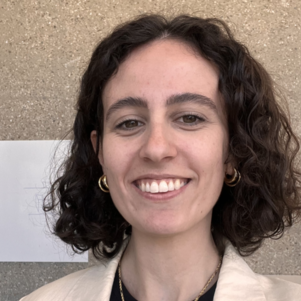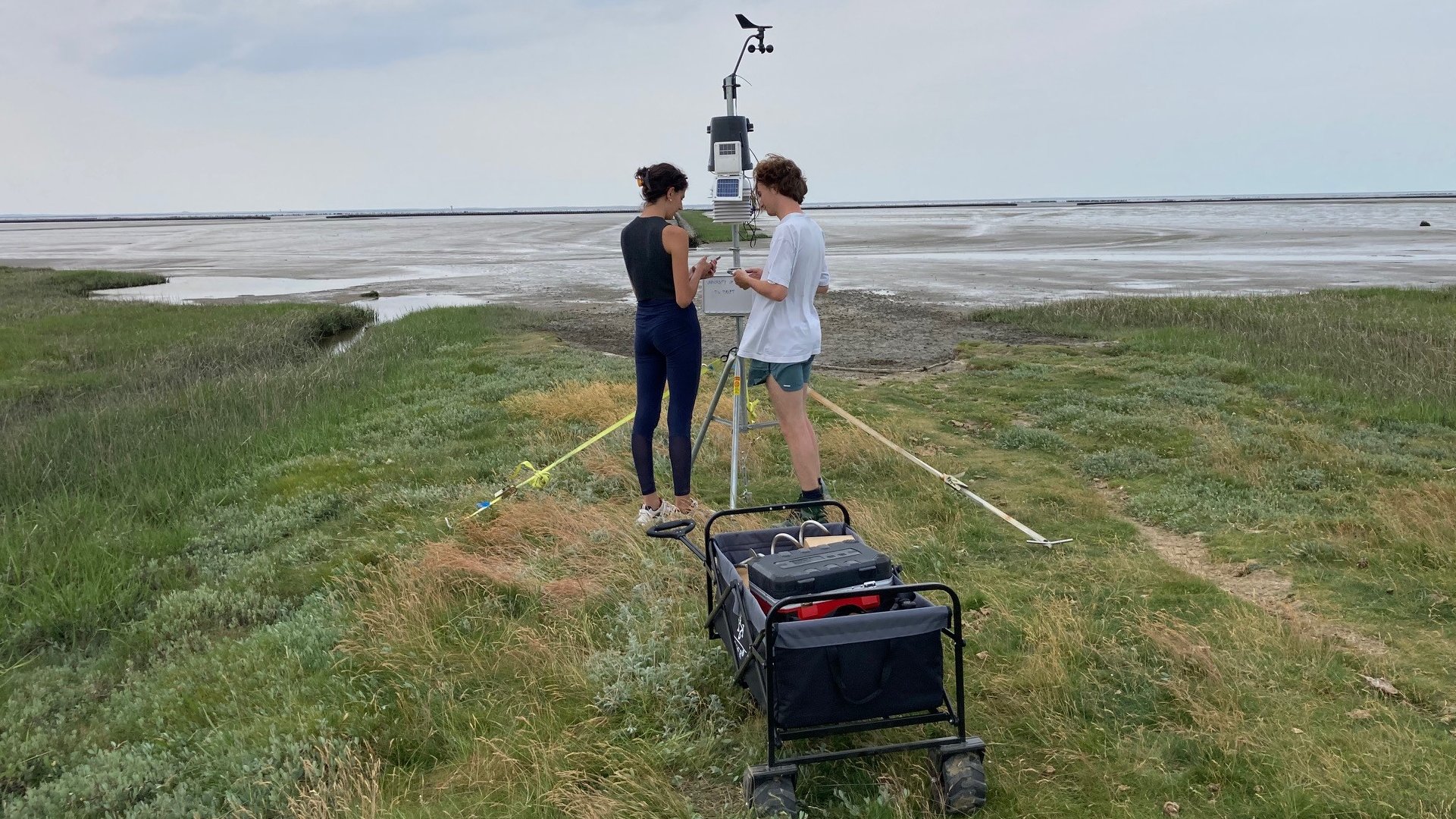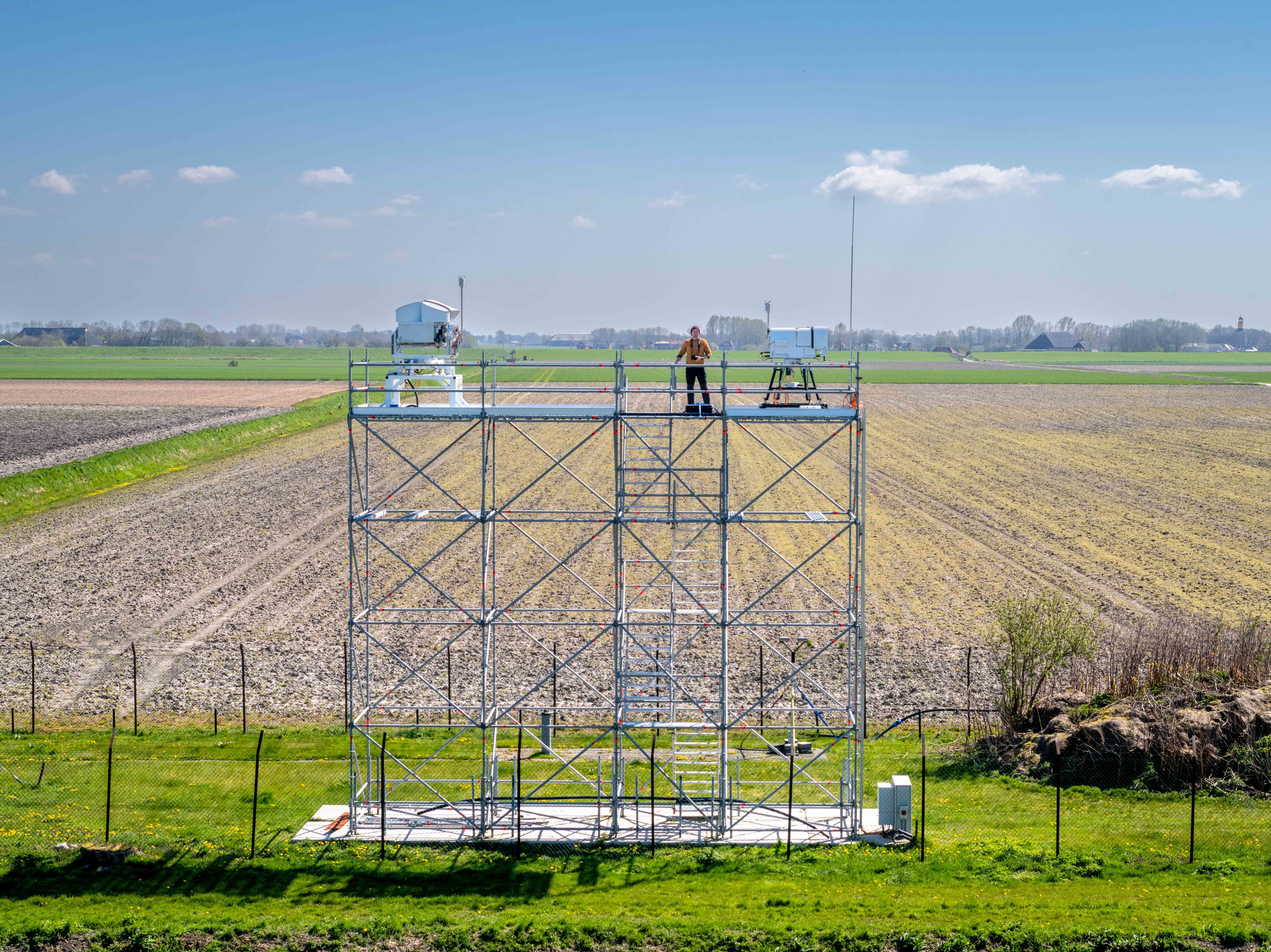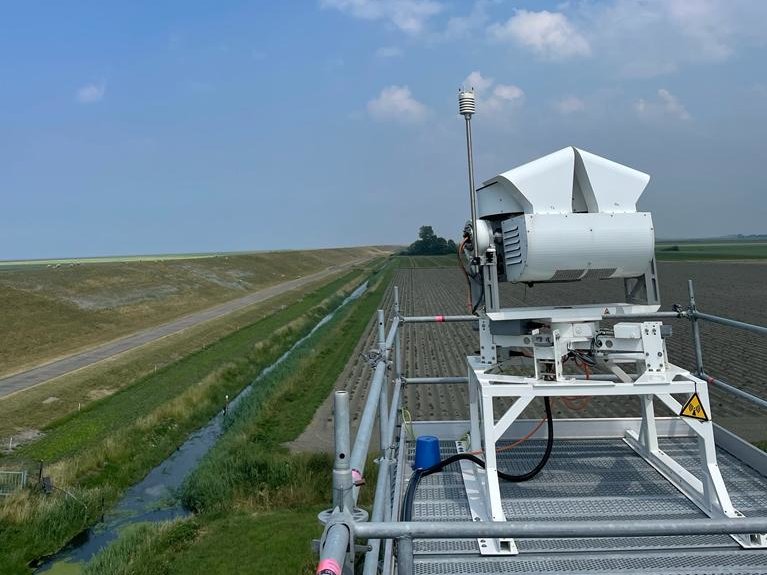Agatha Zamuner & Nathan Van der Borght
Why did you choose this programme and discipline?
Agatha: After my bachelor’s degree in Environmental Engineering, I realized that I was more interested in the science part than the engineering part of the programme. This master’s programme was therefore the perfect choice.
I chose to pursue the Climate and Weather discipline of AES mainly because of my interest in environmental issues and environmental sustainability. I believe that this master’s program allows me to delve deeper into all the processes behind climate and weather phenomena. What I particularly appreciate about the master‘s program is its extensive coverage of different topics within both the climate and weather fields. This allows me to gain a broader understanding of the underlying processes.
Moreover, I like that what we are studying is extremely important nowadays as we are facing a climate crisis. Knowing how the climate and weather patterns will change in the future under a warming planet is essential to come up with possible mitigation and adaptation solutions in the future.
Nathan: I chose this discipline because I was fascinated by the processes taking place in our atmosphere. The physical processes behind our climate, the climate models, and all the different mechanisms and physics that go behind it, are highly complex and have kept researchers busy for decades. I wanted to learn more about the different aspects that make it so difficult to study.
I also liked that this study combines both climate with weather. These two should really be considered together. On top of that, I think climate and weather presents such pressing issues, one that deserves all of our attention. The changing weather patterns under climate change and extreme conditions, like heat waves and floods, will be one of society’s main challenges in the coming decades. This is really a research area where a lot is happening, and a lot of new insights are constantly being gathered because of how fast everything is changing. The idea of working on such an important matter really motivated me to choose this discipline. It has a lot of societal impact.

Agatha Zamuner

Nathan Van der Borght
For your field work, where did you go and what did you do?
Agatha and Nathan: We went to the Lutjewad atmospheric monitoring station at the Waddenzee near Groningen. We set up our own weather stations on the beach, near the sea and on the dike. We wanted to know how the wind pattern would behave under the presence of a dike.
Working with technicians from the station, we used instruments like the weather stations, radar and sonic anemometers, to measure the wind. We also worked with Ruisdael Observatory team reviewing the results and trying to make conclusions. Together with the theory that we learned earlier in the quarter and some new knowledge from experts, we were able to make sense of our data.
What did you learn?
Agatha and Nathan: It was a nice experience to finally see the theory about atmospheric dynamics take place right in front of us, and to measure it with our own instruments, was a unique experience!
Everyone was very motivated and went very far to help us to do good fieldwork and get the best data possible.
We were also lucky enough to monitor an intense storm. This was very exciting for us and led to interesting results! After a week of fieldwork on-site, we came back to Delft and got to work with our own data from the instruments. Together with the theory that we learned earlier in the quarter and some new knowledge from experts, we were able to make sense of our data.
What did you enjoy most about the experience?
Agatha: The fieldwork was the first hands-on experience in the master’s program. The location of the fieldwork was very unique because the atmospheric site is located very close to the Wadden Sea in the proximity of a salt marsh (kwelder in Dutch).
I really liked the fact that we were in charge of the three weather stations: we chose their location, we installed and moved them, and we changed their batteries every day. It really made us feel that we were contributing to the collection of the data.
I enjoyed seeing how the other instruments worked. We often worked with data during the master’s programme, but this was the first time we actually saw where the data was coming from and how it was collected. Moreover, I think that the team of people involved, both professors and technicians, were amazing to work with and were very available to help us at all times.
Nathan: What I enjoyed most about this experience was just being outside in the field and in a different context than the campus. I had never been to Groningen and really enjoyed exploring the city and surroundings after work.
I felt like we really saw a different side of weather research and that is more than just sitting behind your computer looking at data. We also had a lot of freedom: we got to place the instruments where we wanted and explored what we felt could be interesting. The teachers and technicians really valued our input. It was also nice to work in the team of the Ruisdael Observatory for a week, where everyone has a different expertise and contributes to a very cool scientific project.
Photos from Agatha Zumuner, Nathan Van der Borght, and Rob Mackenzie




